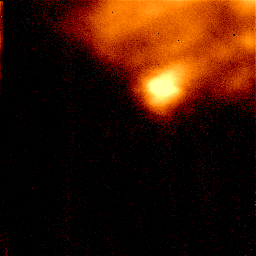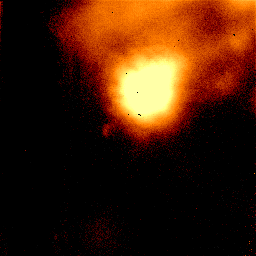


Looking through fog and 98% humidity, we imaged impact G at 2.29 and 4.78 +/- 0.11 (M) microns with a time series of 0.9 sec integrations taken every 7 sec in alternating filters. The series began at 7:35 UT, when precipitation stopped briefly, with the site already bright. The impact region increased sharply in brightness at M, eventually saturating the detector during its brightest phase. Although the 0.06"/pix images did not contain the entire planet, we estimate that the impact site outshone the planet at M. Rapidly varying fog conditions prevented a real-time analysis of the 2.29-micron images.
The two accompanying images were taken in the M filter at 1994 July 18 07:39:45 (gplumem1.gif) and 07:41:41 (gplumem2.gif) UT. The center of the planet is well above and to the right of the image; only the southwestern limb is visible. Both images are saturated, but the site is considerably brighter in the later image.
Orton, Baines, Esterle, Friedson, Goguen, Harrington, Kaminski, Lisse, Miller, Shure, NASA IRTF Comet Collision Team